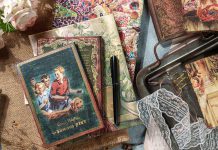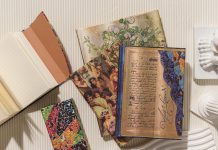A few years ago we all had a good, heartwarming belly laugh when the Double Rainbow video went viral. And while the common assumption at the time was that the man who was so intensely moved by the majesty of Mother Nature must surely have been under the influence, in reality an overwhelming emotional reaction to viewing art is not such an uncommon phenomenon.
Untitled from VJ Peter Rand on Vimeo. In this short, the audio from the Double Rainbow viral video is dubbed over an art viewing experience.
The first written documentation of a person experiencing dramatic psychosomatic reactions while viewing art is within the book Naples and Florence: A Journey from Milan to Reggio by the 19th-century French writer Stendhal. About his 1817 visit to the Basilica of Santa Croce in Florence (home to Giotto’s frescoes), Stendhal wrote:
“I was in a sort of ecstasy, from the idea of being in Florence, close to the great men whose tombs I had seen. Absorbed in the contemplation of sublime beauty… I reached the point where one encounters celestial sensations… Everything spoke so vividly to my soul. Ah, if I could only forget. I had palpitations of the heart, what in Berlin they call ‘nerves.’ Life was drained from me. I walked with the fear of falling.”

Since Stendhal first made his emotional and physical reactions public, there have been many documented cases of people experiencing rapid heartbeat, dizziness, fainting, confusion and even hallucinations while viewing Florentine art. In 1989 scientist Graziella Magherini gave name to this phenomenon, coining the term Stendhal Syndrome to describe the scientific experience of hyperkulturemia. In developing her theory about the particular pathological abnormalities in the people who react this way to art, Magherini observed the mental condition of a woman identified as Inge.
In the “Inge Case” a Scandinavian woman had recently arrived to Italy with her husband and was living in an unhappy marriage in an alienating society while experiencing extreme guilt at leaving her ailing father back in her home country. The woman began taking Italian classes and initially found herself feeling “out of sorts” before the sense of being unwanted in her new country grew to be an overwhelming paranoia. After class, Inge visited one of Florence’s famous cathedrals and was drawn to a version of The Last Supper. Upon seeing the fresco, she immediately began experiencing heart palpitations and hallucinations that included seeing herself as a subject in the painting and, as with many of the other people Magherini studied for her book, Inge was eventually admitted to the Santa Maria Nuova Hospital for observation of her mental condition.
By studying people like Inge who were struck by these sudden and overwhelming psychosomatic episodes, Magherini was able to notice that these experiences were brought on by a personal identification with certain pieces of art. She posited that Stendhal Syndrome occurs most frequently in Florence because it is home to the greatest concentration of Renaissance works; art that is already known the world over. For whatever reason, when an individual with a repressed trauma or stressor sees this art for the first time in person, the trauma is rapidly brought to the surface and the subject connects their own emotions and experiences with those being expressed on the canvas.

Even if you haven’t been to Florence or seen a double rainbow, beauty and art have no doubt had an affect on you. Have you ever had an art-viewing experiencing that has moved you not only emotionally but psychosomatically?
About Paperblanks®: At Paperblanks, we believe that art should have a place in all aspects of life. That’s why we follow the artist’s way in everything we do – creating, crafting and releasing designs we believe have the power to touch people. For more about Paperblanks®, go to our website at paperblanks.com.




